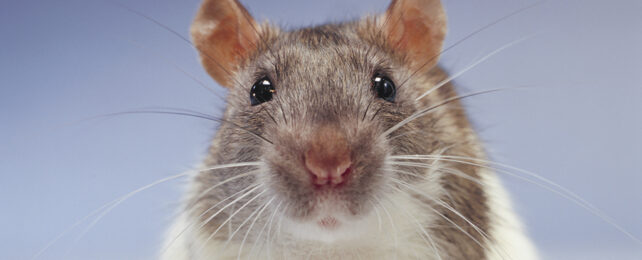Rats use their imaginations in a similar way to humans, a new study shows – meaning their thoughts aren't always fixed on what's immediately in front of them, but can also travel in space and time.
It's something that we do naturally, transporting ourselves to other places, recalling past events, or visualizing future scenarios in our minds. This seem to mostly take place in a part of the brain called the hippocampus, and researchers have now shown similar activity in the hippocampus of rats, too.
A team from the Howard Hughes Medical Institute (HHMI) used virtual reality (VR) combined with a brain-machine interface to determine if the rodents could think about traveling to a certain location to pick up a reward of water, even if they weren't actually moving there.
"To imagine is one of the remarkable things that humans can do," says neurologist Albert Lee from HHMI. "Now we have found that animals can do it too, and we found a way to study it."
Here's how the experiments worked: the researchers fitted a custom brain-machine interface to the rats, which mapped their movements through a virtual reality environment via 'imagined' activity in their hippocampus. The rats were placed on top of a spherical treadmill, so they could navigate in VR without actually moving from the same spot.
As the rats 'moved' around, their brain activity was monitored and translated into a personalized "thought dictionary" that linked places in virtual reality with hippocampus activity. This meant that the researchers could link certain patterns of activity to certain places in the virtual space – giving them a window into what was on the minds of the rats.
The setup was then tweaked so that physical movement on the treadmill didn't influence the VR world. It forced the rats to intentionally and voluntarily imagine moving to certain places or moving objects to certain places to get their water – and the brain scans suggested this is indeed what they were doing.
"The rat can indeed activate the representation of places in the environment without going there," says neuroscientist Chongxi Lai, from HHMI.
"Even if his physical body is fixed, his spatial thoughts can go to a very remote location."
The inference is that if the rats can imagine being in a different place, they might also imagine something in the future or remember something from the past – though it's still difficult to be certain about what's going on in the minds of animals. This VR system could enable future research in this area.
Also of note is the fact that the animals didn't need much training to imagine moving through VR, and that they could keep up their mental activity for around 10 seconds, a significant length of time.
"The stunning thing is how rats learn to think about that place, and no other place, for a very long period of time, based on our, perhaps naïve, notion of the attention span of a rat," says biochemist Timothy Harris, from HHMI.
The research has been published in Science.
